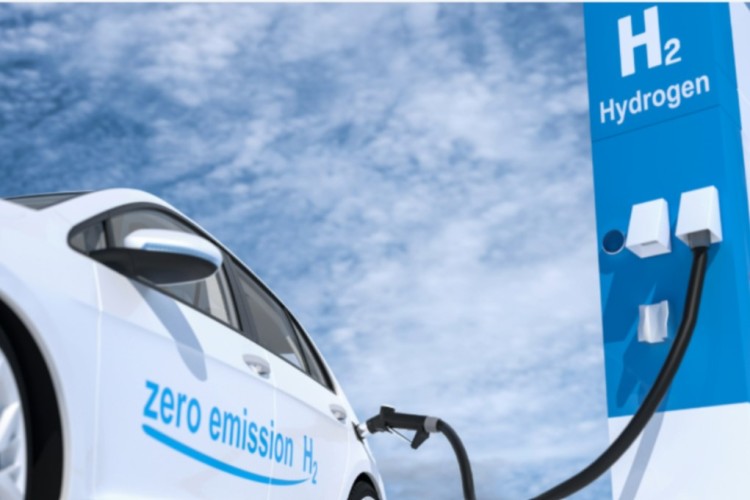Hydrogen fuel cell vehicles: For years, Elon Musk derided hydrogen fuel cells, famously labelling them fool cells. In a dramatic volte-face in June, Tesla announced plans to embrace fuel cell technology, with the Model H slated for a 2026 release. This strategic shift is testimony to the growing recognition of hydrogen’s potential to address the limitations of battery-electric vehicles. It is clear that Tesla recognises hydrogen as a promising avenue to retain its dominance in green mobility and diversify its offerings in an increasingly competitive market.
With nations striving to meet net-zero carbon emission goals, the choice of future vehicle technology has become a subject of intense debate. Battery electric vehicles have led the charge so far, but hydrogen fuel cell vehicles have emerged as a formidable contender. Recent developments highlight the potential of fuel cell vehicles FCVs to revolutionise transportation industry.
READ | State finances: Addressing the fiscal challenge posed by subsidies
Hydrogen’s edge over batteries
Hydrogen fuel cell vehicles offer unique advantages that make them an attractive alternative to battery electric vehicles. Unlike battery EVs, which require lengthy recharging times, hydrogen vehicles can refuel in a matter of minutes. This makes them particularly suitable for long-distance travel and applications where downtime is critical. Additionally, hydrogen fuel cell vehicles have a greater range than many electric vehicles, further enhancing their appeal for drivers who prioritise convenience and efficiency.
The versatility of hydrogen fuel cells also sets them apart. While BEVs dominate passenger vehicle markets, hydrogen FCVs excel in sectors where electrification is challenging. Heavy-duty transport, maritime shipping, and aviation require high energy densities and fast refuelling times, capabilities that hydrogen technology provides. These factors position hydrogen as a critical solution for decarbonising transportation and addressing the limitations of existing technologies.
From an environmental perspective, hydrogen stands out for its sustainability. When produced through green methods such as water electrolysis powered by renewable energy, hydrogen emits zero greenhouse gases. Its only by-product is water vapor, making it one of the cleanest energy sources available. This contrasts sharply with the environmental concerns surrounding lithium-ion batteries, including resource extraction and recycling challenges.
Global investments driving growth
The adoption of hydrogen fuel cell vehicles is being propelled by substantial investments from automakers and governments worldwide. Toyota, a pioneer in hydrogen technology, has the Mirai, a hydrogen-powered sedan, and is actively expanding its hydrogen vehicle line-up. Similarly, Hyundai’s NEXO and BMW’s iX5 Hydrogen represent significant strides in the market, demonstrating the industry’s commitment to this transformative technology.
Government backing is crucial to this growth. California, for example, has set up 62 hydrogen refuelling stations, with plans to add 200 more by 2025. This investment reveals the state’s ambition to lead the hydrogen revolution, setting an example for the rest of the United States. Across the Pacific, Japan and South Korea have emerged as leaders in hydrogen adoption, heavily subsidising infrastructure and vehicle development to accelerate the transition to clean energy.
In Europe, investments in green hydrogen production and refuelling networks are integral to achieving the European Union’s decarbonisation goals. These efforts, supported by billions in subsidies, aim to make hydrogen a cornerstone of the continent’s sustainable energy strategy. Such widespread commitment exemplifies the global consensus on hydrogen’s potential to reshape the future of transportation.
Cost declines and technological advancements
Hydrogen fuel cell technology has achieved remarkable cost reductions over the past decade, making it increasingly accessible for commercial and consumer markets. The cost of producing green hydrogen, once prohibitively expensive, is expected to fall to $2 per kilogram, according to McKinsey. This reduction is driven by advancements in electrolyser technology, economies of scale, and declining renewable energy costs.
Simultaneously, innovations in fuel cell design have enhanced their efficiency and durability, further lowering production costs. These developments have spurred rapid market growth, with the global hydrogen FCV market projected to expand from $2.9 billion in 2023 to $15 billion by 2030. This trajectory reflects the growing recognition of hydrogen’s economic viability and its potential to disrupt traditional energy markets.
Roadblock to mass adoption
Despite these upsides, adoption of hydrogen faces several hurdles, particularly in the infrastructure front. The limited availability of refuelling stations remains a major barrier to adoption. Even in hydrogen-forward regions like California, supply shortages and logistical challenges persist. However, these obstacles are reminiscent of the early days of electric vehicles, when charging networks were similarly underdeveloped.
Addressing these challenges will require coordinated efforts from governments, automakers, and private investors. Encouragingly, initiatives such as Nikola Corporation’s $58.2 million grant for hydrogen refuelling stations in California demonstrate a growing commitment to overcoming these barriers. As infrastructure expands, consumer confidence in hydrogen technology is likely to grow, paving the way for broader adoption.
The environmental imperative
The transportation sector accounts for a significant share of global carbon emissions, making decarbonisation a critical priority. Hydrogen fuel cell vehicles offer a zero-emission alternative, crucial for industries where electrification is impractical. By integrating hydrogen into heavy industries, long-haul trucking, and aviation, nations can accelerate progress toward net-zero targets and reduce their reliance on fossil fuels.
Beyond vehicles, hydrogen’s role extends to stabilising renewable energy grids and decarbonising heavy industries such as steel and cement. This versatility positions hydrogen as a cornerstone of the clean energy transition, capable of addressing multiple challenges simultaneously.
Hydrogen fuel cell vehicles are no longer a distant dream. With falling costs, robust investments, and increasing government support, the hydrogen revolution is gaining momentum. Tesla’s pivot, alongside commitments from Toyota, Hyundai, and BMW, signals a transformative era for transportation.
As the world accelerates toward a greener future, hydrogen offers the promise of sustainable, efficient, and versatile mobility. While challenges remain, history has shown that technological progress, combined with visionary investments, can overcome even the steepest barriers. The road ahead for hydrogen is clear, and its potential to redefine transportation is undeniable.

